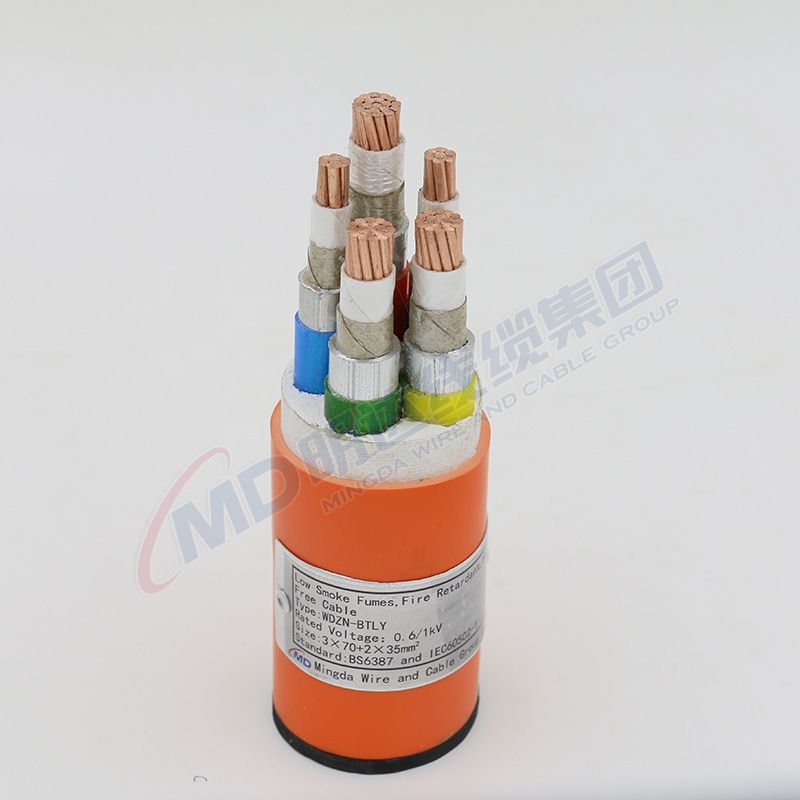9 月 . 22, 2024 09:54 Back to list
multi-core cable wire
Understanding Multi-Core Cable Wires Applications, Benefits, and Considerations
In today's technologically advanced world, the importance of effective electrical communication systems cannot be overstated. Multi-core cable wires play a pivotal role in facilitating this communication by serving as the backbone of wiring for various applications. These cables consist of multiple conductors, or cores, collectively housed within an insulating sheath. This design allows for the transmission of multiple signals through a single cable, offering numerous advantages over single-core wires.
What is a Multi-Core Cable?
Multi-core cables are made up of two or more insulated conductors bundled together. Each conductor is capable of carrying current independently, allowing multiple circuits to share a common outer sheath. These cables come in various configurations, including twisted pairs, which help reduce electromagnetic interference, and coaxial variations, which are essential for high-frequency signals. The versatility of multi-core cables makes them suitable for a wide range of applications, including telecommunications, computer networking, audio and video transmission, and industrial machinery.
Applications of Multi-Core Cables
1. Telecommunications Multi-core cables are the backbone of modern telecommunications systems. They efficiently handle the large amounts of data transmitted over distances, connecting exchanges to subscribers, and facilitating seamless communication. 2. Networking In computer networks, multi-core cables such as Ethernet cables provide connectivity between devices, enabling effective data transfer and communication in local area networks (LANs).
3. Audio and Video In the audio and video industries, multi-core cables are essential for transmitting high-quality signals over long distances without significant signal degradation.
4. Industrial Use Industries utilize multi-core cables for connecting machines and control systems, ensuring reliable operation of equipment in manufacturing processes.
Benefits of Multi-Core Cables
The utilization of multi-core cables comes with several benefits, including
multi-core cable wire

- Space Efficiency By combining multiple conductors into a single cable, multi-core cables reduce the amount of space required for installation, which is particularly beneficial in confined areas
.- Cost-Effectiveness Since multi-core cables combine numerous circuits into one unit, the overall material and installation costs can be lower than using multiple single-core cables.
- Versatility These cables are adaptable for various applications, making them a preferred choice in both commercial and residential installations.
- Reduced Electromagnetic Interference The twisted pair configuration found in many multi-core cables minimizes interference from external sources, ensuring a stable and reliable signal.
Considerations When Choosing Multi-Core Cables
While multi-core cables offer impressive benefits, selecting the right cable for specific applications is crucial. Factors to consider include
- Temperature Ratings Ensure that the cable is suited for the operating environment, particularly in industrial settings with extreme temperatures.
- Signal Integrity Choose a cable designed to maintain signal quality over the required distance, especially for high-frequency applications.
- Compliance and Standards Verify that the cable meets necessary industry standards and regulations to ensure safety and compatibility with existing systems.
In conclusion, multi-core cable wires are integral components of modern electrical systems, providing a practical solution for ensuring effective and reliable communication across various industries. Understanding their applications, benefits, and the nuances of proper selection can help consumers and professionals alike make informed choices that enhance both performance and safety in their electrical networks.
Share
-
Understanding the Differences Between Wafer Type Butterfly Valve and Lugged Butterfly ValveNewsOct.25,2024
-
The Efficiency of Wafer Type Butterfly Valve and Lugged Butterfly ValveNewsOct.25,2024
-
The Ultimate Guide to Industrial Swing Check Valve: Performance, Installation, and MaintenanceNewsOct.25,2024
-
Superior Performance with Industrial Swing Check Valve: The Essential Valve for Any SystemNewsOct.25,2024
-
Industrial Swing Check Valve: The Ideal Solution for Flow ControlNewsOct.25,2024
-
You Need to Know About Industrial Swing Check Valve: Functionality, Scope, and PerformanceNewsOct.25,2024